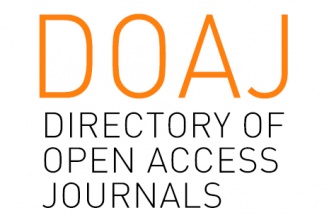Roles of Co-Living in Increasing Social Interaction in Rental Accommodation
Abstract
Keywords
Full Text:
PDFReferences
Alfirević, Đorđe, and Sanja Simonović-Alfirević. 2020. “Significance of Territoriality in Spatial Organization of Coliving Communities.” Arhitektura i Urbanizam (50):7–19. doi:10.5937/a-u0-25785.
Amran, A. M., K. Zainuddin, and A. Ridfah. 2024. “Hubungan Antara Penyesuaian Diri Dan Kesepian Pada Mahasiswa Perantau Di Kota Makassar.” 3(2):731–39.
Angdjaja, Celicia Aurielle, and Rully Damayanti. 2022. “Studi Karakteristik Fisik Lobby Lift Sebagai Ruang Interaksi Sosial Di Apartemen Metropolis Surabaya.” Advances in Civil Engineering and Sustainable Architecture 4(2):121–30. doi:10.9744/acesa.v4i2.12947.
Ardiansyah, Mochamad, MT Dr. Ir. Ibnu Sasongko, M. Si Ardiyanto M. Gai, ST., and Program Studi Perencanaan Wilayah D. 2015. “Kontak Dan Tingkat Interaksi Sosial Masyarakat Berdasarkan Tipologi Perumahan.” Article 14(207):3–10.
Day, C. (2002). Spirit and Place: Healing Our Environment. Architectural Press.
Gehl, J. (2010). Cities for People. Island Press.
Hartanto, Rudi Agus, Djatmika Djatmika, and F. X. Sawardi. 2023. “Impoliteness Strategies and Impolite Responses to Swearing Utterances at Javanese Slapstick Shows.” International Journal of Multicultural and Multireligious Understanding 10(10):236. doi:10.18415/ijmmu.v10i10.5168.
Hoppenbrouwer, Bas. 2019. “The Community Effects of Co-Living.” (February):81.
Ismail, Haikal, Mirna Nur Alia Abdullah, and Warlim Warlim. 2023. “Interaksi Sosial Antara Lansia Dengan Pendamping Di Yayasan Pondok Lansia Tulus Kasih.” Ideas: Jurnal Pendidikan, Sosial, Dan Budaya 9(3):907. doi:10.32884/ideas.v9i3.1444.
Maghfirah, Nurul, and Heru W. Poerbo. 2023. “Identifikasi Model Spasial Hunian Berkonsep Co Living.” Jurnal Arsitektur ARCADE 7(2):306. doi:10.31848/arcade.v7i2.3100.
Mangkunegara, S. N., N. Nurdiani, and W. Katarina. 2021. “The Study of Millennial Needs and Willingness to Share Living Space in Jakarta, Indonesia.” IOP Conference Series: Earth and Environmental Science 794(1). doi:10.1088/1755-1315/794/1/012166.
Musyaffa, Hakimul. 2010. “Seting Ruang Komunal Dalam Rumah Kos.”
Nurhijrah, Ria Wikantaria, and Abdul Mufti Radja. 2019. “Manfaat Ruang Terbuka Dan Hubungannya Dengan Kegiatan Interaksi Sosial Studi Kasus: Perumahan Nusa Tamalanrea Indah Makassar.” 1–10.
Osborne, Rachel. 2018. “Best Practices For Urban Coliving Communities.” Interior Design Program: Theses 132.
Pinandita, Satria, Stefy Prasasti Anggraini, and Tidi Ayu Lestari. 2023. “Kualitas Ruang Komunal Sebagai Ruang Interaksi Sosial: Perbandingan Ruang Komunal Formal Dan Non Formal Di Perumahan Bekasi.” 6(1):954–64.
Prasetya, Dwi Nur, and Sri Hartati MS. 2014. “Hubungan Antara Kesepian Dengan Penyesuaian Diri Pada Mahasiswa (Studi Korelasi Pada Mahasiswa Tahun Pertama Fakultas Psikologi Universitas Diponegoro).” Journal of Chemical Information and Modeling.
Sekar, pratiwi pudita. 2021. “Perancangan Apartemen Terjangkau Untuk Mahasiswa Dengan Konsep Co-Living Di Seturan Yogyakarta.” Angewandte Chemie International Edition, 6(11), 951–952. 113.
Shafique. 2018. “The Rise and Fall (and Rise?) Of Communal Living.” Co-Living and the Common Good (March):21–26.
Steding, Daniel. 2019. “Coliving: An Emerging Term without a Common Definition.” 1–58.
Sucipto, Ilman Basthian. 2021. “Spektrum Ruang Komunal Sebagai Wadah Interaksi Sosial Bagi Penghuni Pada Rumah Susun Sederhana Sewa Di Jakarta.” Jurnal Lingkungan Binaan Indonesia 10(3):132–37. doi:10.32315/jlbi.v10i03.53.
Suwandi, Annisa Aulia, and Ratna Dewi Nur’aini. 2021. “KAJIAN KONSEP ARSITEKTUR PERILAKU DAN TINGKAT KENYAMANAN PENGHUNI PADA HUNIAN VERTICAL DENGAN ANALISIS BEHAVIORAL MAPPING (Studi Kasus: Rusunawa Pinus Elok Tower C, Jakarta Timur).” Vitruvian Jurnal Arsitektur Bangunan Dan Lingkungan 10(3):257. doi:10.22441/vitruvian.2021.v10i3.009.
Tjiptoherijanto, Prijono. 2016. “Urbanisasi Dan Pengembangan Kota Di Indonesia.” Populasi 10(2):57–72. doi:10.22146/jp.12484.
Vestbro, Dick Urban, and Liisa Horelli. 2012. “Design for Gender Equality: The History of Co-Housing Ideas and Realities.” Built Environment 38(3):315–35. doi:10.2148/benv.38.3.315.
Yuwono, Cynthia, and Julia Dewi. 2024. “Pendahuluan Kajian Teori.” 239–55.
DOI: http://dx.doi.org/10.18415/ijmmu.v12i8.6917
Refbacks
- There are currently no refbacks.
Copyright (c) 2025 International Journal of Multicultural and Multireligious Understanding

This work is licensed under a Creative Commons Attribution-NonCommercial-NoDerivatives 4.0 International License.
https://ijmmu.com
editor@ijmmu.com
facebook.com/ijmmu
Copyright © 2014-2018 IJMMU. All rights reserved.



































